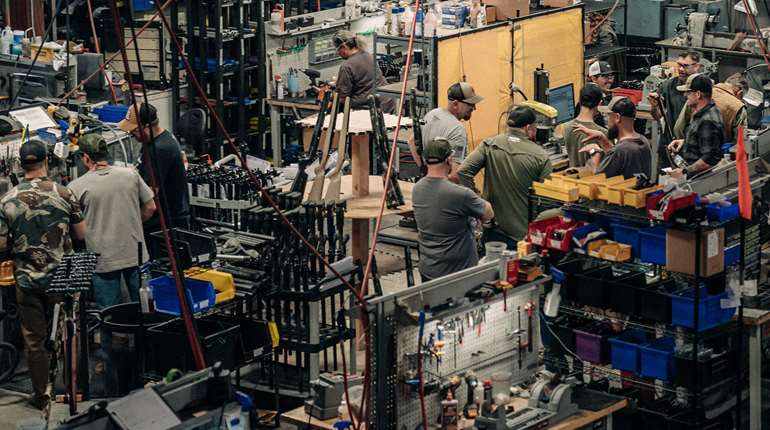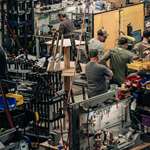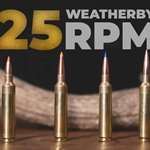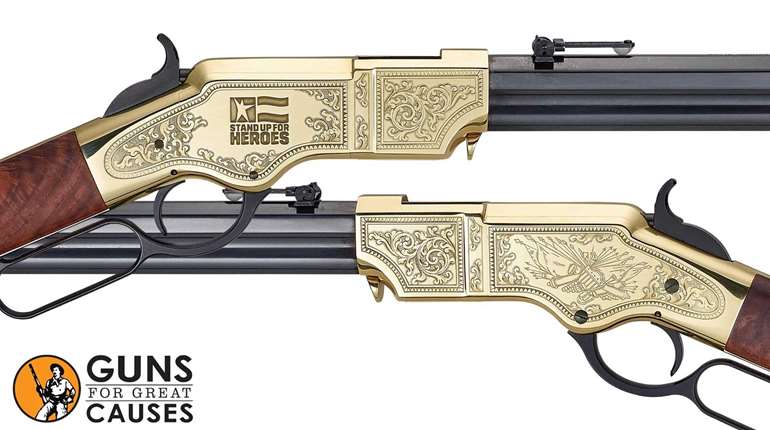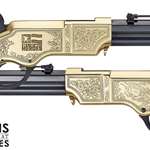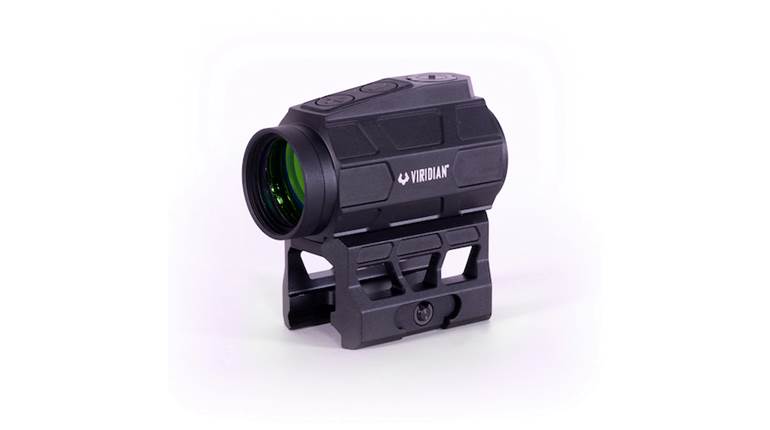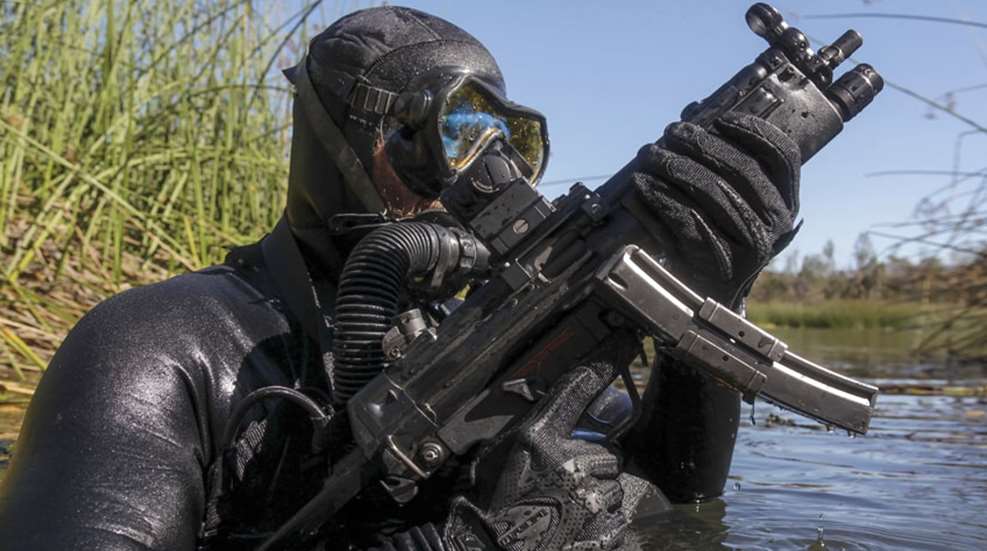
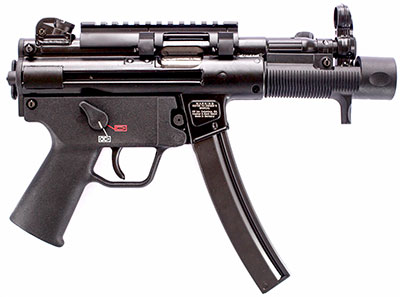
The MP5 submachine gun has developed the reputation as the go-to close-quarters-battle arm for elite forces around the world. The MP5-N variant was developed specifically for the U.S. Navy SEALs and bears more than a passing resemblance to the company’s latest iteration, the semi-automatic SP5K (r.).
It was an idea born of desperate times. In the waning days of World War II, Mauser engineers sought to simplify the revolutionary Sturmgewehr to save both materials and manufacturing time. The solution they came up with was to use the blowback system. The simplest form a self-loading firearm can take, a blowback design would do away with the gas-operating mechanism used by most such rifles. But the basic blowback design could only handle the low pressures of pistol cartridges in a practical shoulder-fired arm. To harness the power of a rifle cartridge, it would need a little help. So the engineers decided to use a unique system of rollers to delay the rearward thrust of the bolt until pressure in the rifle’s chamber dropped to a safe level.
The resulting rifle, the StG 45, was too-little, too-late for the German war effort, but the roller-delayed blowback principle would live on with Heckler & Koch (H&K), the company that would rise from the ashes of Mauser’s Oberndorf factory. Roller-delayed firearms would establish the reputation of the H&K company, which scaled and adapted the system to every platform from belt-fed machine guns to 9 mm Luger handguns, but one H&K stood out from the rest. The glamour child in the family is the MP5 submachine gun. Though other H&K firearms have been produced in greater numbers, the MP5 is the most widely recognized for its association as the go-to close-quarters-battle weapon for elite forces around the world for several decades. In 2016, Heckler & Koch USA announced that it would be importing a semi-automatic pistol version of the MP5 called the “SP5K.”
Getting The Action Rolling
It was a long journey from a 1945 Mauser factory to the SP5K now on dealers’ shelves, so let’s start at the beginning. Following World War II, the roller-delayed design was taken to Spain, where it was further developed at the Spanish government’s Centro de Estudios Tecnicos de Materiales Especiales (CETME). By the early 1950s the newly reformed West German army was looking for an infantry rifle and took an interest in the CETME design. In 1954, to further develop the rifle, the German government enlisted the help of Heckler & Koch, a company formed in 1949 by former Mauser engineers in Oberndorf.
In 1959, the improved version of the CETME, chambered in the new NATO standard 7.62x51 mm, beat out the SIG 510 and AR-10 to become the German army’s Gewehr 3 (G3). The G3 went on to be adopted by more than 40 countries. With nearly 7 million produced to date, it’s one of the most prolific battle rifles of the post-World War II era.

At the heart of the G3 was an improved version of the World War II Mauser roller-delayed blowback system. To delay the opening of the action, the force of the fired cartridge’s expanding gas is transferred from the bolt head to another heavier component in the system—in the G3, the barrel extension, bolt carrier and action spring. Think of the Newton’s Cradle physics toy. If you pull two of the suspended spheres away from the other three and release them, they impact the center sphere, which stays stationary, but transfers the force to the two opposite outer spheres, causing them to swing away. In roller-delayed terms the two outside spheres on one side are the force of the cartridge firing, the center sphere is the bolt head and the two spheres on the opposite side are the barrel extension, bolt carrier and action spring.
The way these forces are transmitted through the bolt head and to the other components of the mechanism are through the rollers. When the bolt of a roller-delayed blowback firearm is closed, two rollers contained in the bolt head are resting externally against the barrel extension and internally against a wedge, called the locking piece.
When the gun is fired, the force of the expanding gas pushes back onto the bolt head. About 25 percent of that force is transmitted to the barrel extension and the remaining 75 percent to the locking piece. The inside of the barrel extension is machined into two inclined planes, which force the rollers inward, where they push against the shoulders of the locking piece, forcing it rearward. The locking piece transmits this force into the bolt carrier, which moves rearward against the tension of the action spring at four times the speed of the bolt head. This delays the bolt from opening long enough for the pressure inside the barrel to drop to a safe level. After the carrier has traveled about 4 mm rearward, the bolt head begins to move back as well, extracting the empty case and ejecting it before returning under the action spring tension to load a new round.
Because of how quickly a roller-delayed blowback design opens, the chamber pressure is higher than a typical locked-breech firearm, meaning the cartridge case is still adhering tightly to the chamber wall. Therefore, a series of flutes is added to the chamber to aid extraction. They allow some of the fired cartridge’s gas to flow back into the chamber, surrounding the empty casing and forcing it from the chamber wall.
In the early 1960s, to diversify its product line H&K adapted the G3 design to other chamberings, including 5.56x45 mm NATO and 7.62x39 mm Russian. In 1964, the company began work on a 9 mm Luger-chambered submachine gun, which it designated the HK54. The design was adopted by the West German police in 1966, which designated it as the Maschinenpistole 5, or “MP5.”
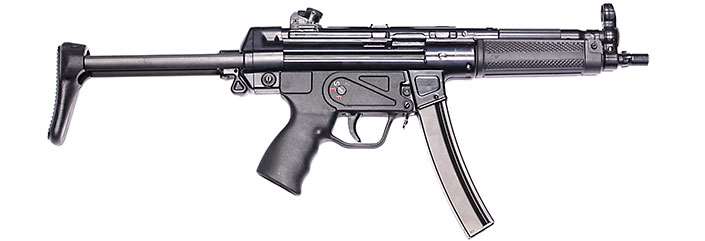
When the MP5 was introduced, most of its contemporaries, like the Uzi, Beretta 12 and Sterling, used an open-bolt, simple blowback design. One advantage of the MP5’s delayed-blowback design is that it fires from a closed bolt, meaning the aim is not disrupted by the heavy mass of the bolt moving forward when the trigger is pulled. The system also allows the bolt and other components of the MP5 to be made lighter and more compact than a simple blowback design (the MP5’s bolt assembly weighs half as much as the Uzi’s), which made the MP5 a pound or two lighter than many of its competitors.
The drawback of the roller-delayed system in a submachine gun is that it is more complicated, expensive and time-consuming to produce than a simple blowback firearm, but the timing of the MP5’s release was perfect. During World War II the submachine gun had been used en masse by frontline infantrymen. At a time when the service rifle of most countries was a manually operated bolt-action, the submachine gun provided cheap, mass-produced, portable firepower for urban and mechanized warfare. Designs like the British Sten gun could be made for as little as $10 each, and submachine guns were produced in the millions during the war.
Flashbangs & Operators
Following World War II, a new breed of infantry arm, based on the selective-fire “assault rifle” concept, was replacing both the bolt-action rifle and the submachine gun in the soldier’s arsenal. Realizing that the submachine gun’s place was no longer on the battlefield, Heckler & Koch marketed the MP5 specifically to law enforcement agencies. The 1970s was a decade marred by international terrorism—airline hijackings and hostage situations. In response, police agencies around the world formed special tactical units to deal with the new threat. They found an ideal arm in the MP5. It was a precise instrument, compact and accurate, that had evolved well beyond the battlefield burp gun of World War II.
The MP5 began showing up in high-profile international incidents. In April 1980, six gunmen took over the Iranian Embassy in London, holding 26 hostages. After a six-day standoff, the British Special Air Service (SAS) dramatically stormed the building in an onslaught of fire and explosions. The team was armed with MP5s. Television news cameras were rolling, and the MP5 would forever be linked to the Nomex-clad, gasmask-wearing elite warrior.
The MP5’s modular design—handguards, stocks and fire-control mechanisms can easily be swapped by removing a locking pin and a quick-detach optics mount was offered—allowed H&K to tailor the design to specific applications. In the early 1970s, the company introduced an MP5 with an integral suppressor: the MP5SD. In 1976, a compact and concealable version, the MP5K (the K stood for kurz or short), was brought to the market. The MP5K featured a shortened receiver with no shoulder stock and a barrel that was 4" shorter than a standard MP5. In pursuit of the ultimate in concealable firepower, H&K even produced a briefcase-clad version that allowed the submachine gun to be fired by operating a trigger on the case’s handle.
Coming To America
In 1976 H&K set up a U.S. branch in Chantilly, Va. It wasn’t until the opening of H&K’s American subsidiary that the MP5 began to make inroads into the American market. Despite the common police usage of the submachine gun in Europe, U.S. law enforcement had traditionally preferred the shotgun. The modern submachine gun offered greater precision, longer range and more firepower in a compact and lightweight package.
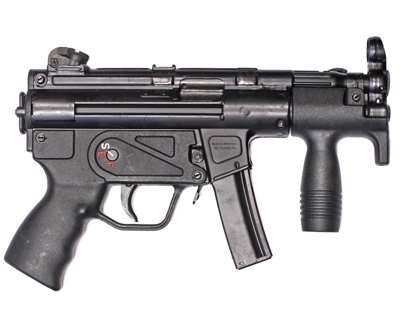
The MP5 not only thrived in the U.S. market, American users requested changes that made the German submachine gun uniquely their own. The MP5-N, (equipped with a collapsible stock and a Knight’s suppressor) was made to the specifications of the Navy SEALs. A 10 mm Auto-chambered MP5 was designed for the FBI (MP5/10), followed by a .40 S&W version (MP5/40) for other law enforcement agencies. A shoulder stock was added to the MP5K to make the Personal Defense Weapon (PDW). It was in use by U.S. military units from Delta Force to the Green Berets along with law enforcement agencies, including the FBI and United States Secret Service. The MP5 had hit its heyday.
In the 1970s H&K-USA started importing semi-automatic versions of its famous military rifles for the civilian market. They included the HK91 (G3) and HK93 (HK33), and became known to collectors as “the 90-series.” In 1983, it introduced a semi-automatic-only rifle version of the famed MP5. Called the HK94, it featured a 16" barrel to be civilian-legal and was sold with either the fixed or retractable stock of the MP5.
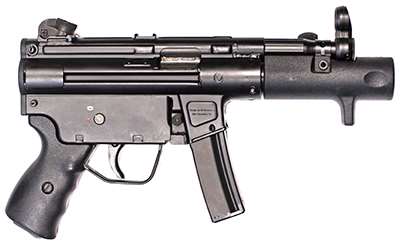
In 1989, importation of HK90-series rifles ended when they were included in an ATF list of rifles deemed to no longer have a “sporting purpose.” In response, that same year H&K introduced a new version of the HK94. Called the “SP89” it was a semi-automatic, pistol version of the MP5K (the “SP” stood for “Sport Pistol”). But the SP89 was short-lived. The 1994 Crime Bill ended its importation.
By the 1990s close-quarters-battle doctrine was beginning to shift from the 9 mm Luger submachine gun to the compact 5.56x45 mm NATO carbine. On the ingress and regress of missions, special operations units wanted longer range; and the power of a rifle cartridge was needed when encountering barriers, vehicles and bad guys in body armor. Law enforcement agencies saw the pictures of the rifle-armed special operators and followed suit.
In 1999 H&K introduced the Universal Machine Pistol, or UMP. With its simple blowback mechanism and extensive use of polymer, the UMP was designed to save cost and weight over an MP5. In 2000, manufacture of the MP5/40 and MP5/10 was discontinued. In 2001, H&K introduced a small-caliber PDW called the MP7, all the while developing its own compact versions of its 5.56mm G36 and HK416 rifles. The MP5’s days seemed numbered.
Sixteen years later, however, the MP5 has refused to fade away. The submachine gun still has a role in military and law enforcement arsenals. Sound suppressors are more effective on the pistol-caliber arms. Their low recoil make them easier to control in fully automatic fire, and their compact size makes them more maneuverable in confined spaces. When rifle-level power is not required, the submachine gun is still ideal.
The resurgence of military and law enforcement interest in submachine guns is evidenced by several new designs that have come to the market over the last decade. Though a half-century old, the MP5 can still hang with its contemporaries due to its roller-delayed design. Many MP5 operators use the word “smooth” to describe an MP5’s firing impulse, and its well-deserved reputation for reliability and longevity comes from the fact that MP5s have been documented to fire over half a million rounds in their service life. As of 2017, MP5 production has topped half-a-million units and counting.
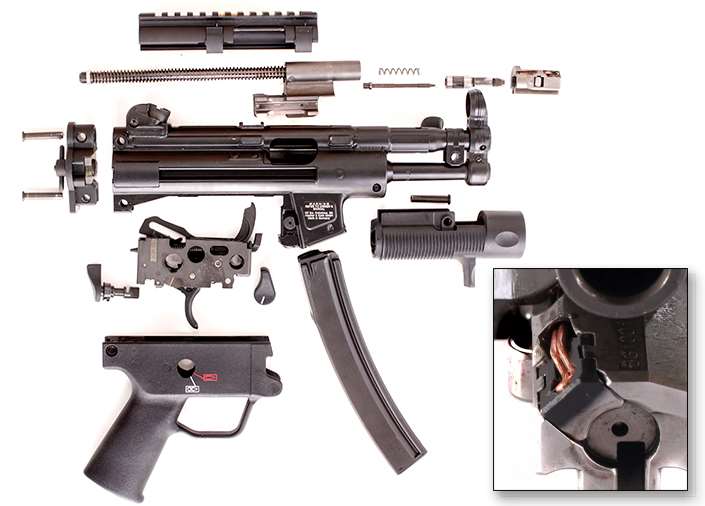
Demand … And Supply
Civilian demand for H&K roller-delayed firearms has also stayed strong. Less than 16,000 HK94s were imported during its six-year run and an even smaller number of SP89s. In the two decades since the last H&K roller-delayed firearms for civilians were brought into this country, prices have skyrocketed. The 9 mm Luger variants command the highest prices, with original HK94s bringing over $3,000 and SP89 pistols up to $5,000.
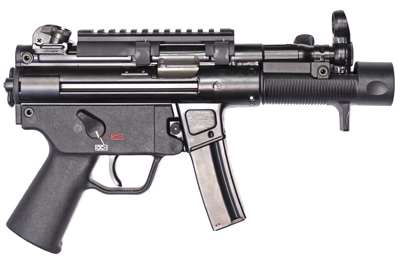
For the past 25 years, H&K fans have had to pay high prices for an original factory H&K or buy one of the “clones” that are either a factory-licensed product or assembled out of surplus parts. Enter the SP5K. Like the SP89 pistol, the SP5K is a near-identical copy of the MP5K submachine gun, with a few exceptions. The vertical grip of the MP5K’s handguard is missing. Adding a vertical foregrip to a pistol would make it subject to National Firearms Act (NFA) regulations. Since your fingers aren’t safely wrapped around a vertical grip when firing, the SP5K’s handguard features a hand stop and a “flash protector” extension that goes beyond the muzzle.
Another notable difference is the SP5K lacks the front locking pin attachment on its trigger housing. Due to the modular nature of the MP5 family, the BATFE stipulated changes that prevent a full-automatic fire control mechanism from being attached to a semi-automatic firearm. Like previous HK90-series firearms, the front of the SP5K’s trigger housing clips onto a shelf made into the receiver. The paddle or “flapper” magazine release is lost in this modification, though the right-side, push-button magazine release is retained. Internally the SP5K features the latest upgrades of the MP5 family, including a multi-strand firing pin spring, revised bolt face profile and enhanced roller holder plate.
The SP5K has been updated from the SP89 in two areas. First, the trigger housing is polymer, like the MP5, instead of the stamped metal of 90-series H&K firearms. Second, a removable, low-profile, Picatinny rail optics mount has been added to the top of the receiver. Heckler & Koch ships the SP5K in a fitted Boyt-brand, TSA-approved polymer case that has steel hinges and latches, an O-ring seal and a pressure-relief valve. The pistol is packaged with two magazines (30 round or 10 round), a sight adjustment tool and a bungee-type single-point sling.
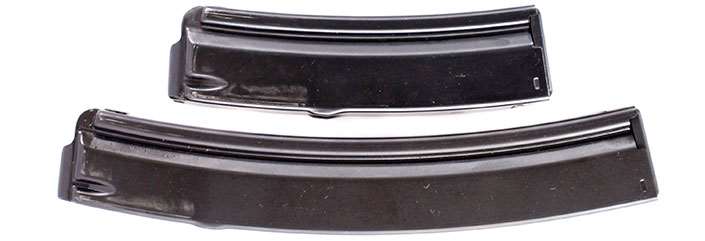
The SP5K’s sights are the same as the MP5’s, with a fixed front post and drum rear that is adjustable with the provided tool for windage and elevation. Like the MP5K, the SP5K’s rear sight features open notches for handgun eye relief.
If you’re expecting service pistol accuracy when you take the SP5K to the range you’re in for a pleasant surprise. With its fixed 4.53" hammer-forged, free-floating barrel (the handguard attaches to the receiver and cocking lever support housing), the SP5K averaged five-shot groups of little more than 1.5" at 25 yds., with some ammunition grouping under 1". During my test, I tried a variety of loads, from subsonic to +P, 115-gr. ball ammunition to defensive hollow-points, and the SP5K functioned flawlessly with everything it was fed. The trigger comes in at just under 8 lbs., but its smooth take-up and short reset belie that figure.
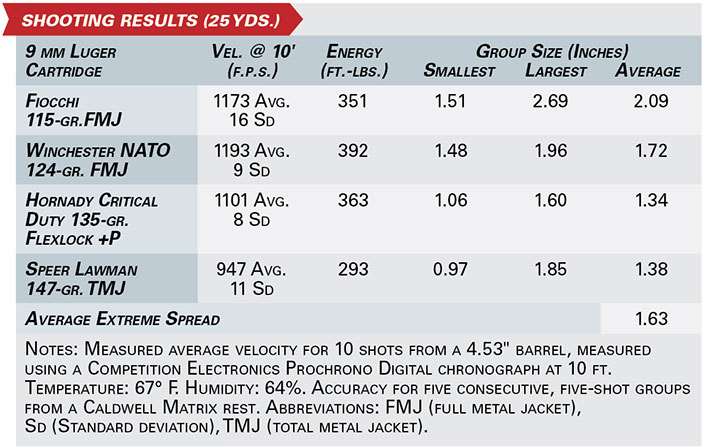
The FBI-style, pictogram-marked trigger housing of the SP5K features both a bilateral grip and safety selector lever. Though the cocking lever is only on the left side it can be operated by reaching over the top of the firearm, though the optics mount makes this more difficult. For right-handed shooters, only those with the largest of hands will be able to reach the magazine release button with the index finger when maintaining a firing grip. Swapping the magazine while shooting right handed involves reaching around the magazine well and pressing the button with left-hand index finger. For the left-handed shooter, the right hand can grasp the magazine as the thumb easily hits the release button.
The single-point bungee sling supplied with the SP5K is not only for carry, but can also be used as a shooting aid. When properly adjusted, the shooter can push the pistol out against the sling’s tension for a steadier hold. It’s a system that H&K has developed for a variety of its stockless products, from its compact submachine guns to the HK169 grenade launcher. Smaller shooters, though, may find the sling too long, even when adjusted to its shortest length.
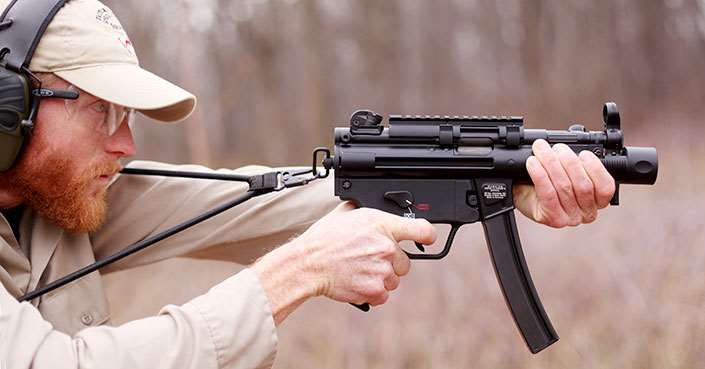
With an MSRP of $2,699 the SP5K is more expensive than an MP5 clone, but subtracting the price of the included accessories—optics rail, sling, sight adjustment tool, case and extra magazine ($700 if purchased separately)—from the SP5K’s encountered price puts you right in the neighborhood of what MP5K copies are selling for. To add to the value, the pistol is backed by H&K’s limited lifetime warranty.
Heckler & Koch pitches the SP5K as ideal for collecting, recreational shooting and self-defense, and it fits in all three categories. For collectors, it’s an Oberndorf-produced, roller-delayed firearm for less than the market price of H&K’s long-discontinued 90-series firearms. For the recreational shooter, it’s a high-quality firearm that will have a service life of tens of thousands of rounds. For home defense, the same characteristics that make the MP5 the choice for close-quarters battle make the SP5K ideal—it’s a compact, accurate and reliable firearm that can serve as a platform for a host of tactical accessories designed for the MP5 family.
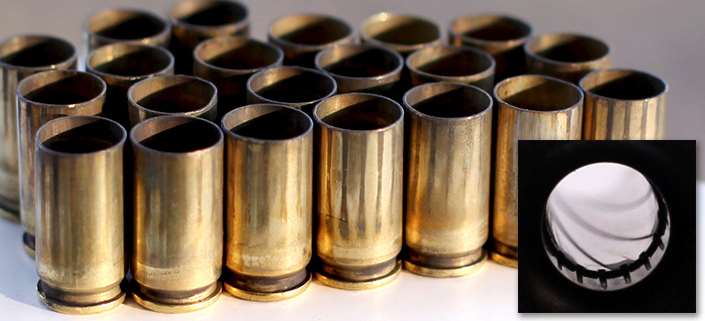
In 2014, on the 50th anniversary of the MP5’s debut, H&K introduced upgrades to the design it called a “Mid-Life Improvement.” The company seemed to be implying that it expects the MP5 to be in the hands of frontline military and law enforcement users for another 50 years. A last-ditch design has turned into one of the most iconic firearms of the 20th century. Seventeen years into the 21st it’s showing no signs of stopping. For those of us in the civilian world who want to buy into that history, technology and reputation, H&K offers the SP5K.
Watch a video of the SP5K in action here.
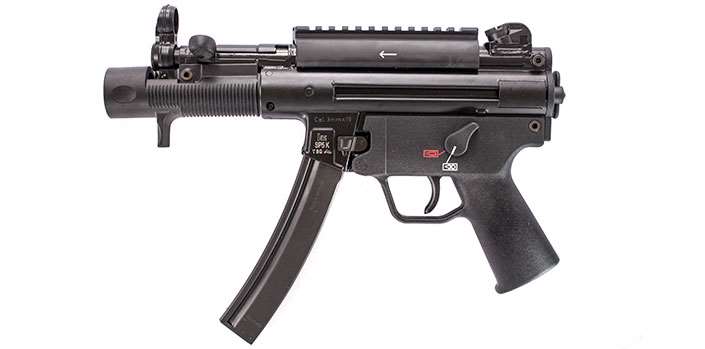
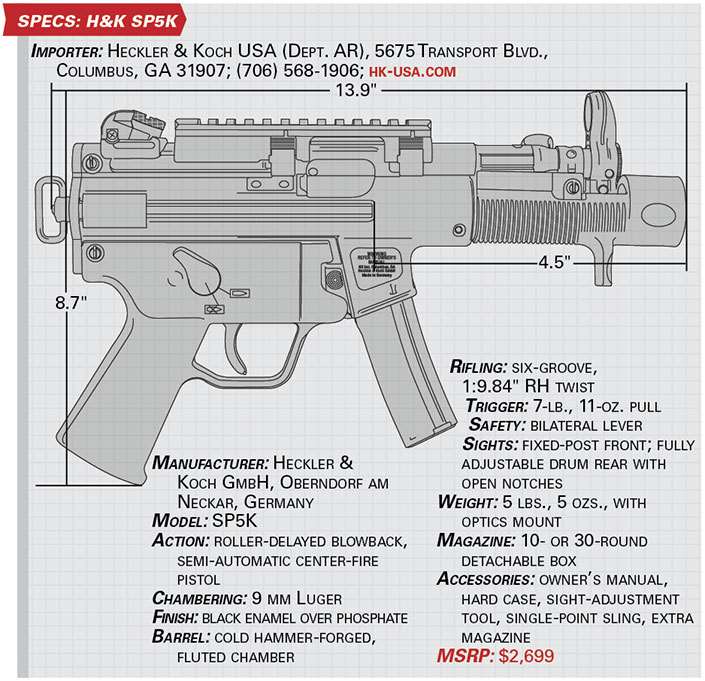
Delayed? Locked? Both?
When it comes to Heckler & Koch firearms, it’s technically a roller-delayed system, not a roller-locked system. What’s the difference? Well, a locked system is kind of like parking your car on a hill and setting the emergency brake. The car is not going anywhere until you “unlock” it by releasing the brake. A roller-delayed system is like parking your car on the hill and forgetting to set the brake. As the car starts to roll away and you grab onto the door, your shoes sliding across the pavement are delaying, but not preventing, the car from reaching its final destination.
In firearm terms, in a gas-operated locked mechanism the bolt stays locked into the receiver or barrel extension until the gas system forces the bolt to unlock (think AR-15, AK-47, M1 Garand, etc.). It’s like a bolt-action rifle with a mechanical arm that rotates and pulls the bolt back and forth. In a roller-delayed blowback system the mechanism is never locked, the rollers just delay the bolt from opening until the pressure has dropped to a safe level in the barrel.
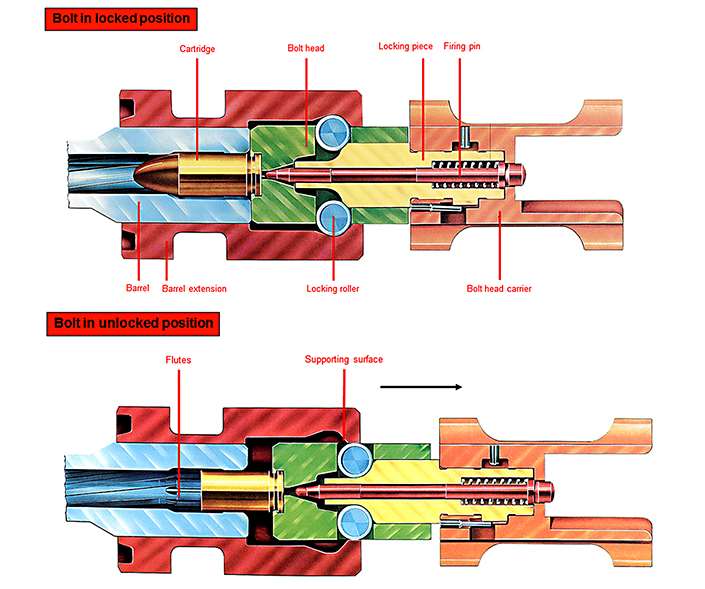
Confused? That’s understandable. During World War II the Mauser engineers who designed the roller-delayed blowback system called it “halbverriegel” or “half-locked” and H&K, in its own marketing literature and armorer’s manuals, usually refer to the system as “roller-locked, delayed blowback.”
Other famous roller-delayed blowback rifles include the Swiss SIG 510 (also based on the StG 45 design, it lost out to the G3 in the German army’s rifle competition) and the CETME series. The Spanish Ameli light machine gun also used the system.
So are there roller-locked firearms? Of course. The most famous is the World War II MG-42 machine gun. It was a recoil-operated design. Upon firing, the barrel and bolt move backwards locked together until the barrel stops and the rollers unlock from the barrel extension. The Czechs even scaled the roller-locking system down to use in their semi-automatic CZ-52 7.62x25 mm pistol.
—Jeremiah Knupp












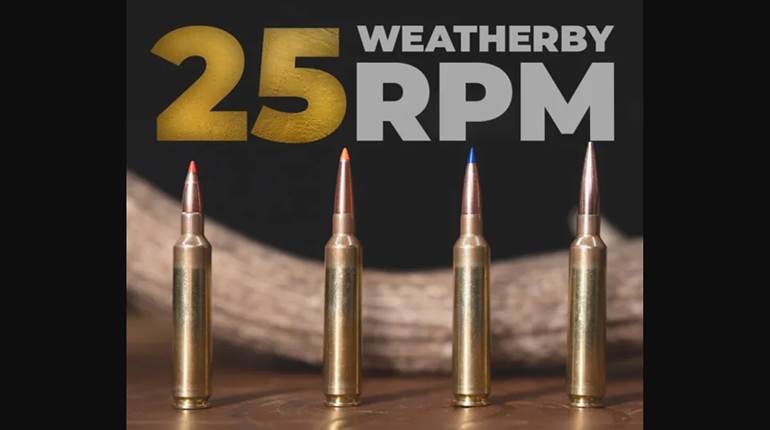
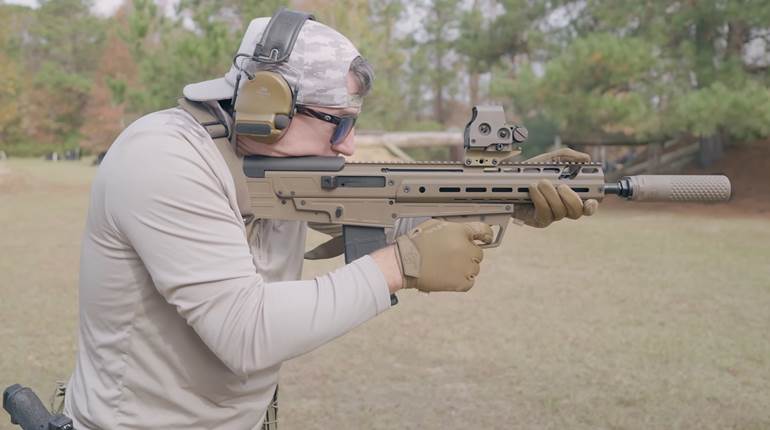
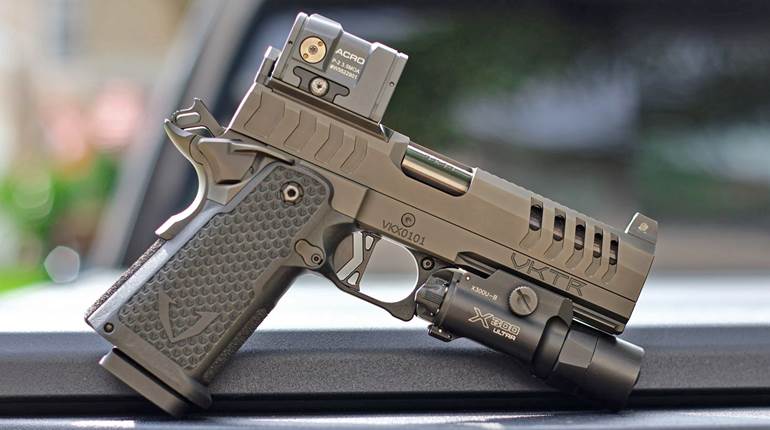

![Oconnor Small[67]](/media/bu2le2tp/oconnor-small-67.jpg?anchor=center&mode=crop&width=770&height=430&rnd=134126774953630000&quality=60)
![Oconnor Small[67]](/media/bu2le2tp/oconnor-small-67.jpg?anchor=center&mode=crop&width=150&height=150&rnd=134126774953630000&quality=60)
